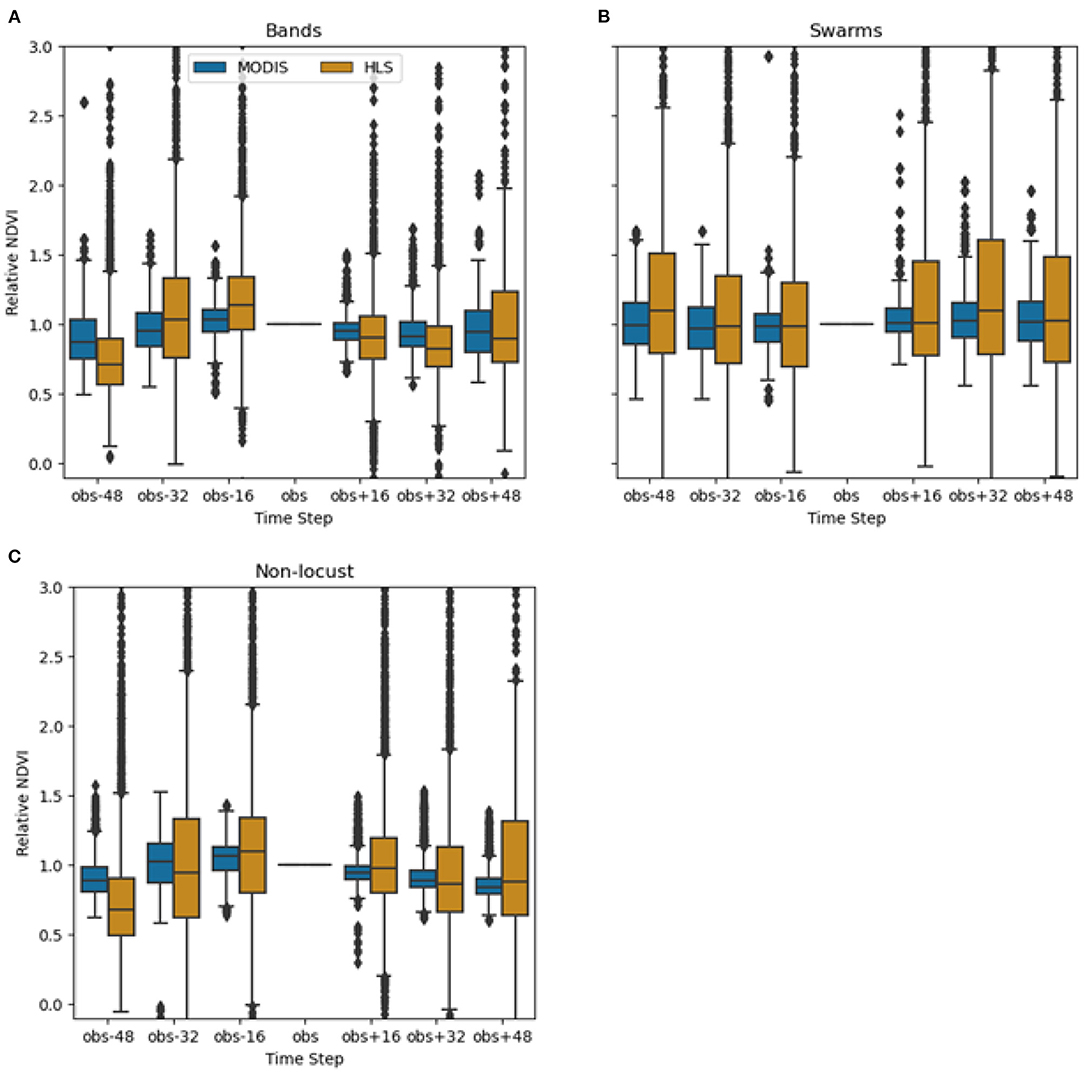A desert locust upsurge (a very large increase in locust numbers and multiple outbreaks, with two or more successive generations of breeding and gregarization), can lead to widespread devastation of vegetation and crops, impacting food security in affected regions. A research article on “Limitations of Remote Sensing in Assessing Vegetation Damage Due to the 2019–2021 Desert Locust Upsurge” was published September 27 in Frontiers in Climate, focusing on the desert locust upsurge in the Greater Horn of Africa (GHA) region. The paper was co-authored by Emily Adams, Helen Parache, Emil Cherrington, and Vikalp Mishra of the SERVIR Science Coordination Office / University of Alabama in Huntsville (UAH), Lee Ellenburg and Ronan Lucey of UAH, and SERVIR Applied Sciences Team Principal Investigator Catherine Nakalembe of University of Maryland, College Park.

Relative NDVI of MODIS vs. HLS compared over band (A), swarm (B), and non-locust (C) sites [n = 36,820, n = 24,696, n = 72,863].